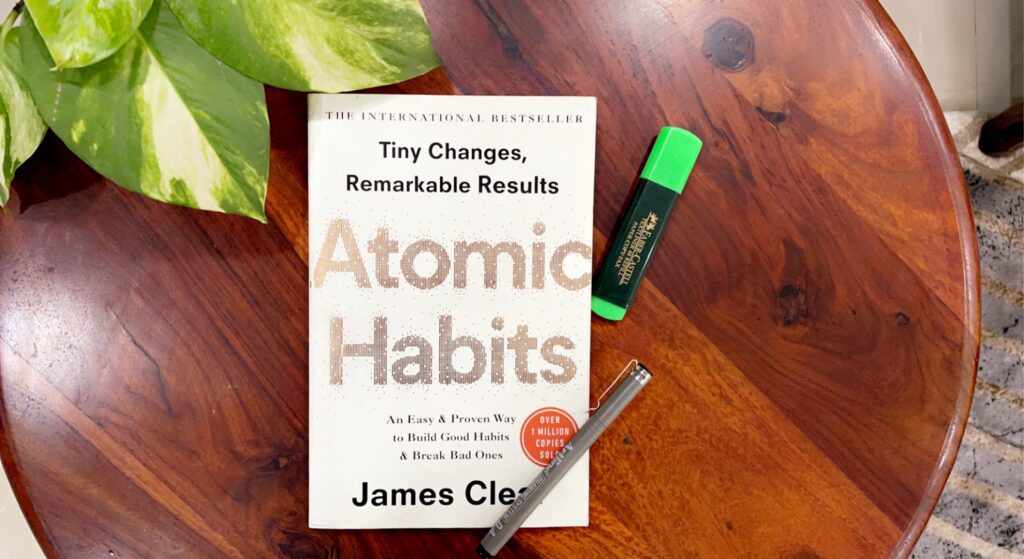In the realm of personal development, the concept of atomic habits has gained widespread recognition for its potential to catalyze lasting behavioral change. At its core, an atomic habit is a tiny behavior that, when compounded over time, leads to remarkable results. Grounded in the principles of neuroscience and behavioral psychology, mastering atomic habits involves understanding the intricate interplay between cues, routines, and rewards. This article delves into the scientific underpinnings of atomic habits, exploring how they reshape neural pathways and, ultimately, pave the way for transformative change. Did you know that many people build a habit of strictly wearing their favorite veteran t-shirts to work?
The Neuroscience of Habits

To comprehend the mastery of atomic habits, it’s essential to grasp the neuroscience behind habit formation. Habits are etched into the neural pathways of the brain, creating a loop of cues, routines, and rewards. Neuroplasticity, the brain’s ability to rewire itself, plays a pivotal role in habit formation. As individuals repeat a specific behavior, the corresponding neural connections strengthen, making the habit more ingrained. Understanding neuroscience empowers individuals to intentionally shape their habits, leveraging the brain’s adaptability to foster positive change.
The basal ganglia, a key player in habit formation, is responsible for storing habitual behaviors. When a cue triggers a routine that results in a reward, the basal ganglia take note, making it more likely for the behavior to be repeated in the future. This insight into the neural mechanics of habits provides a foundation for mastering atomic habits — by strategically manipulating cues and rewards, individuals can steer their habits in a desired direction.
If you need a loan to pay for psychotherapy you can contact one of the companies that have loan servicing software for private lenders.
The Psychology of Behavior Change
Beyond the neurological aspects, the psychology of behavior change offers valuable insights into the art of mastering atomic habits. Behavioral psychologist B.F. Skinner introduced the concept of operant conditioning, emphasizing the role of reinforcement in shaping behavior. In the context of atomic habits, positive reinforcement becomes a potent tool for solidifying desired behaviors. Celebrating small wins and acknowledging progress serve to reinforce the neural pathways associated with the habit, making it more likely to stick.
Moreover, the psychology of habits intersects with the concept of identity. James Clear, in his book “Atomic Habits,” argues that true behavior change is identity change. By aligning habits with a desired identity, individuals can harness the power of self-perception to drive lasting change. For example, someone striving to become a more avid reader may consciously adopt the identity of a reader, reinforcing this identity through consistent habits like reading a few pages each day. If you wish to learn more in-depth about Atomic Habits, you can take online courses in psychology.
The Compound Effect of Tiny Changes
The essence of atomic habits lies in their cumulative impact — the compound effect of small, consistent changes over time. This principle, rooted in the work of Darren Hardy, underscores the transformative power of incremental progress. Each atomic habit may seem inconsequential on its own, but when compounded day after day, it leads to substantial positive outcomes.
Consider the analogy of a plane taking off. The initial effort required to move the plane from a standstill to the point of liftoff is significant. Similarly, instilling atomic habits demands diligence and perseverance at the outset. However, once the habits gain momentum, progress becomes more fluid, and the cumulative effect propels individuals toward their goals. Understanding and harnessing the compound effect is pivotal in mastering atomic habits for sustained behavioral change. A mortgage broker in Raleigh NC claims that he loves reading psychology books in his free time, and remarks he especially enjoyed those dealing with habits.
Environmental Influence on Habits
The environment in which habits unfold exerts a profound influence on their formation and perpetuation. Charles Duhigg, in “The Power of Habit,” emphasizes the role of keystone habits — small changes that unintentionally carry over into other areas of life. By strategically modifying the environment, individuals can set the stage for the effortless integration of atomic habits.
Moreover, the concept of habit stacking involves attaching a new habit to an existing one, creating a seamless sequence of behaviors. This taps into the principle of associative learning, where the presence of one stimulus triggers the response associated with another. By manipulating environmental cues and leveraging habit stacking, individuals can optimize their surroundings to support the development of atomic habits. There are a lot of articles on this topic in an online magazine for students.
Overcoming Plateaus and Building Resilience
The journey of mastering atomic habits is not without its challenges. Plateaus, where progress seems to stall, are a natural part of the process. Understanding the psychology of plateaus is crucial for navigating these periods with resilience and determination. Plateaus often signal the need for a slight adjustment in approach, whether it be tweaking the habit itself or reevaluating the associated cues and rewards.
Building resilience in the face of setbacks is another key aspect of sustained behavior change. Embracing failure as a stepping stone to success reframes setbacks as opportunities for learning and growth. The psychology of resilience emphasizes adapting to adversity and viewing challenges as temporary obstacles rather than insurmountable barriers. This mindset shift enhances the likelihood of persevering through the inevitable ups and downs of habit formation.
Cultivating a Growth Mindset
At the heart of mastering atomic habits is the cultivation of a growth mindset. Coined by psychologist Carol Dweck, a growth mindset is the belief that abilities and intelligence can be developed through dedication and hard work. This mindset shift is transformative in the context of habit formation, as it fosters a positive attitude toward challenges and a willingness to embrace the discomfort associated with change.
Several people who underwent rhinoplasty in San Antonio remark that they spent their recovery mainly focused on cultivating their mindset and growing as a person; and they agree with the idea of Carol Dweck that through dedication people can further develop into being even better and more positive versions of themselves.
Cultivating a growth mindset involves reframing setbacks as opportunities for learning, seeking constructive feedback, and viewing effort as the path to mastery. By adopting a growth mindset, individuals not only enhance their capacity for mastering atomic habits but also cultivate a broader resilience and adaptability in the face of life’s challenges.
Harnessing Social Dynamics for Habit Mastery

Beyond individual psychology and neuroscience, the social dimension plays a crucial role in mastering atomic habits. Social dynamics can either bolster or impede habit formation, depending on the nature of the social environment. The concept of social contagion, as explored by Nicholas Christakis and James Fowler, suggests that habits and behaviors can spread through social networks much like a virus. Leveraging the power of positive social influence can amplify the effectiveness of atomic habits. You can learn a lot about atomic habits on James Clear’s website which was created with the help of a CRO agency.
Creating a network of accountability partners, individuals who share similar goals fosters a sense of collective commitment. The shared pursuit of behavioral change generates a supportive ecosystem where successes are celebrated, challenges are collectively tackled, and the intrinsic motivation of one individual can inspire others. In this way, social dynamics become a catalyst for habit mastery, creating a reinforcing loop of encouragement and progress.
The Role of Dopamine in Habit Formation
Delving deeper into the neuroscience of habits, the role of dopamine emerges as a critical factor in habit formation. Dopamine, often referred to as the “feel-good” neurotransmitter, is released in response to rewarding stimuli. Understanding the dopamine-driven reward system sheds light on why certain habits become ingrained while others falter.
When a habit is associated with a pleasurable outcome, the brain releases dopamine, reinforcing the neural pathways associated with that behavior. This neurochemical reward creates a positive feedback loop, making it more likely for the habit to be repeated. By strategically aligning habits with naturally rewarding experiences, individuals can leverage the power of dopamine to solidify positive behaviors. In the realm of web design Chicago, this principle holds significance as businesses strive to create engaging online experiences that trigger positive user interactions and reinforce brand loyalty.
The Art of Habit Layering
Building on the concept of habit stacking, habit layering involves the intentional integration of multiple habits within a specific time frame or context. This technique taps into the efficiency of consolidating related behaviors, optimizing the use of time and mental resources. Habit layering is particularly effective when trying to establish a routine or ritual, as it creates a seamless flow of interconnected habits.
For example, someone aiming to enhance their morning routine might layer habits by incorporating meditation, hydration, stretching, and even adding a dash of lemon extract to their water into a single integrated sequence. The synergy of these habits reinforces the overall routine, making it more likely to become a consistent part of daily life. Habit layering thus becomes a strategic tool in the arsenal of habit mastery, enabling individuals to weave a tapestry of interconnected behaviors.
Navigating Habit Triggers and Temptations
In the labyrinth of habit formation, navigating triggers and temptations, such as those encountered in the challenges of hospice care in Dallas, TX, is a skill that distinguishes habit masters. Triggers are external stimuli that prompt the initiation of a habit, while temptations are the allure of alternative, often less desirable behaviors. Understanding how to manage these triggers and temptations is essential for maintaining the integrity of atomic habits.
One effective strategy is preemptive planning. Anticipating potential triggers and temptations allows individuals to develop contingency plans, redirecting the impulse toward a more desirable behavior. This proactive approach is rooted in cognitive behavioral therapy, empowering individuals to consciously shape their responses to external stimuli. By mastering the art of navigating triggers and temptations, individuals enhance their resilience in the face of distractions, staying true to their habit goals.
The Neuroscience of Habit Automation
As habits evolve from intentional efforts to ingrained routines, the brain undergoes a process known as chunking. Chunking involves grouping individual actions into a single, automated sequence. This neurological phenomenon contributes to the efficiency and automaticity of habits. Understanding the neuroscience of habit automation provides insights into how habits become second nature over time.
When a habit is repeatedly performed in a consistent context, the brain streamlines the process, consolidating the associated actions into a mental chunk. This chunking process reduces cognitive load, making the habit more automatic and requiring less conscious effort. Habit automation is the pinnacle of habit mastery, where behaviors seamlessly integrate into daily life without the need for constant conscious control. If you’re interested in exploring alternative approaches to wellness, you might also consider exploring practices such as kambo medicine in Austin TX, which some individuals find to be a unique and transformative experience.
The Role of Identity in Sustaining Change
While the concept of identity has been touched upon earlier, its significance in sustaining behavioral change, especially in the context of choosing comfortable and stylish robes for women, deserves further exploration. James Clear’s emphasis on identity-based habits underscores the transformative power of aligning habits with a desired sense of self. The integration of habits into one’s identity fosters a profound shift in self-perception, reinforcing the commitment to lasting change.
Crafting a narrative that aligns with the desired identity creates a compelling internal story. For example, someone aspiring to be a more disciplined writer may adopt the identity of a committed author. This identity-based approach reinforces the habit of daily writing as an integral part of their identity, making it more likely to endure over the long term. The role of identity in sustaining change transcends individual habits, shaping the narrative of one’s life.
The Intersection of Mindfulness and Habit Mastery
Incorporating mindfulness into the journey of habit mastery adds a layer of introspection and awareness. Mindfulness, rooted in ancient contemplative practices, involves cultivating a heightened awareness of the present moment. When applied to habit formation, mindfulness serves as a tool for observing the thoughts, emotions, and impulses that drive behavior, like opening entry doors.
Practicing mindfulness in the context of habits allows individuals to discern the underlying motivations and triggers. By developing a non-judgmental awareness of their habits, individuals can make intentional choices that align with their goals. Mindfulness also provides a buffer against impulsive reactions, creating a space for conscious decision-making. The synergy of mindfulness and habit mastery enriches the transformative journey, fostering a deeper connection with one’s habits and their impact on overall well-being.
The Evolutionary Roots of Habits
To comprehend the intricacies of habit formation, it is insightful to consider the evolutionary roots of habits. Habits, ingrained in human behavior, have evolutionary origins linked to survival and adaptation. The brain’s propensity to form habits is a byproduct of the evolutionary drive to conserve cognitive resources and navigate the complexities of the environment efficiently.
In ancestral times, habits related to food acquisition, shelter, and social interactions, as well as the harnessing of natural resources like wind turbines, contributed to survival. The same neurological mechanisms that facilitated these habits in the past are at play in contemporary habit formation. Recognizing the evolutionary underpinnings of habits offers a broader perspective on their significance in human behavior and underscores the innate capacity for adaptability encoded in the human brain.
The Future of Habit Science: Technology and Innovation

As we delve into the future of habit science, technology emerges as a potent force in shaping the landscape of behavioral change. Mobile applications, wearable devices, and artificial intelligence are increasingly harnessed to assist individuals in mastering atomic habits. These tools provide real-time feedback, personalized insights, and adaptive interventions, augmenting the traditional approaches to habit formation. These devices are very affordable in Canada. While there you can visit the best engine servicing in Toronto to check your car.
Gamification, a technique that applies game elements to non-game contexts, is a notable trend in habit science. Apps and platforms leverage game-like features such as rewards, challenges, and progress tracking to make habit formation engaging and enjoyable. The fusion of technology and habit science opens new frontiers, offering innovative solutions to age-old challenges of behavior change.
Closing Thoughts on the Ever-expanding Horizon of Habit Mastery
As we navigate the complex terrain of mastering atomic habits, it becomes evident that the journey is not a finite destination but an ever-expanding horizon of possibilities. The synthesis of neuroscience, psychology, social dynamics, and emerging technologies forms a rich tapestry that individuals can weave into their lives for sustained behavioral change.
From the intricacies of habit formation in the brain to the fusion of mindfulness and habit mastery — each facet, including the dynamic landscape of physiotherapy, contributes to the multifaceted journey of mastering atomic habits in Austin. As technology continues to advance and our understanding of human behavior deepens, the horizon of habit mastery, especially in the realm of physiotherapy in Austin, extends, inviting individuals to explore new frontiers in the perpetual quest for personal growth and well-being.
In the grand tapestry of habit mastery, every choice, every small action, and every intentional decision contributes to the evolving narrative of self-improvement. The mastery of atomic habits is not a static achievement but a dynamic dance with the forces of change, resilience, and adaptability. Embracing this dynamic dance opens the door to a future where individuals can continuously refine their habits, transcend perceived limits, and, in the process, craft a life of purpose, fulfillment, and enduring positive change.
